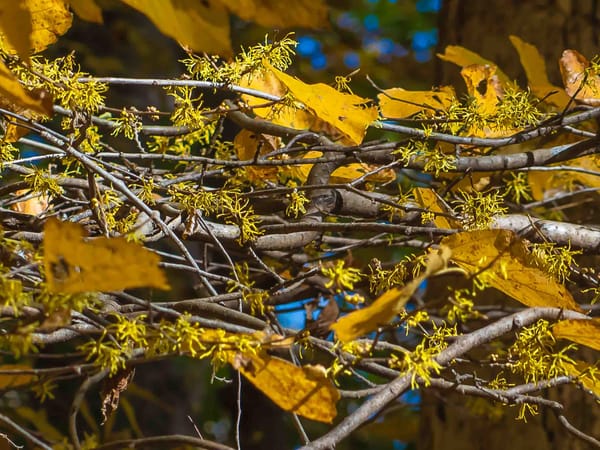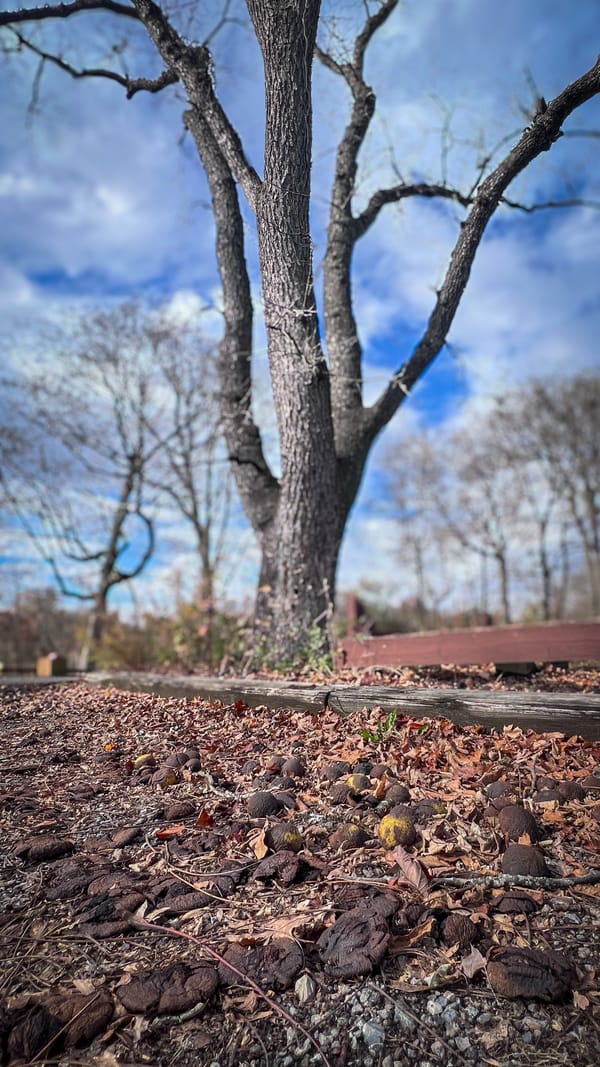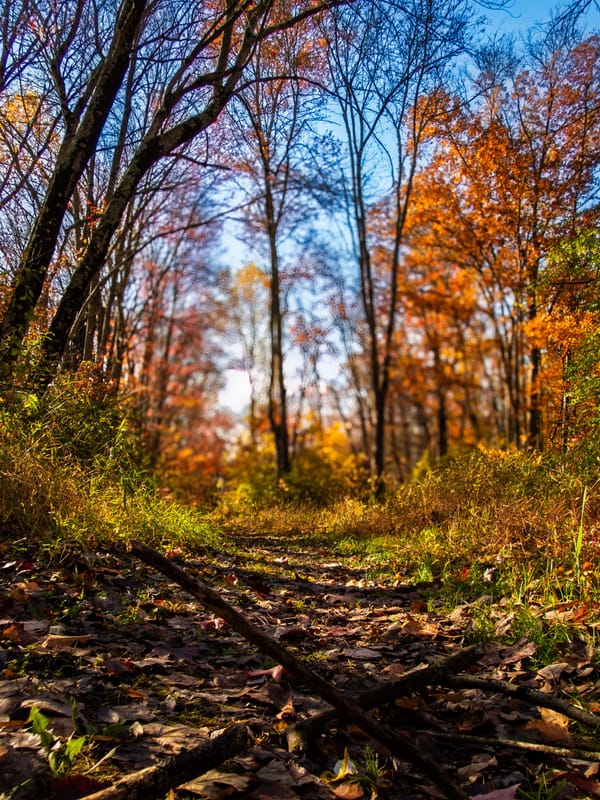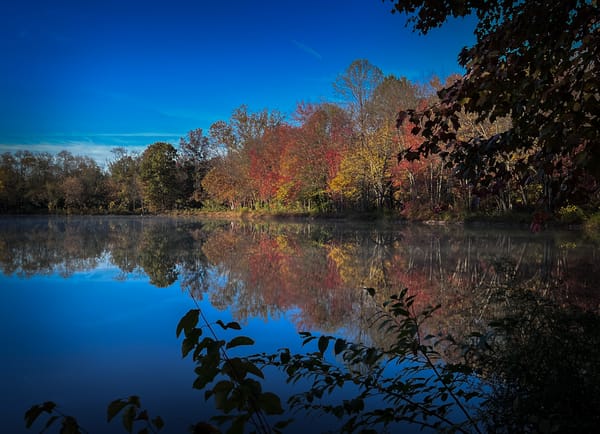Identifying Dragonflies
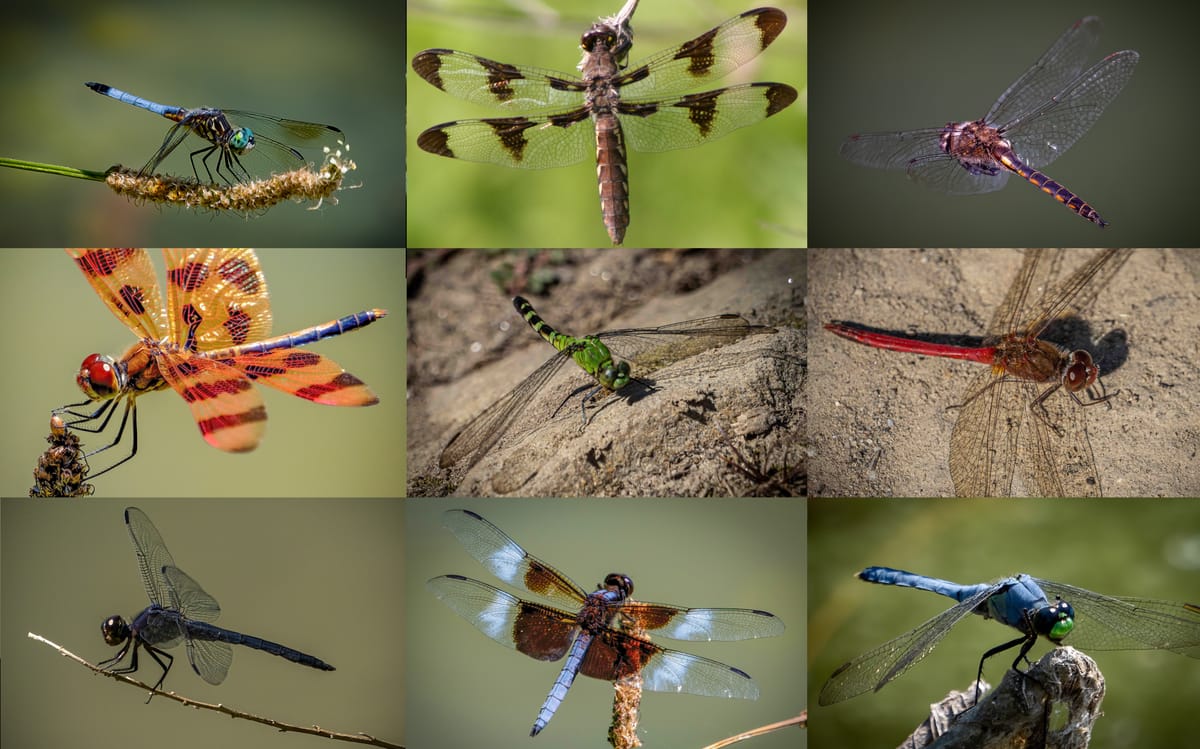
The other post in this series covers the Dragonfly Life Cycle
These are the twelve species of dragonfly you are most likely to see at the park. I've arranged them into their various families and groups and included some basic points to identify them. male dragonflies are much more likely to be found at the ponds defending territories, seeking mates, and guarding females during egg-laying. Females typically spend less time at the pond. I have never spotted a female of a few species, so I've included photos from other sources where their markings make them easy to distinguish from males.
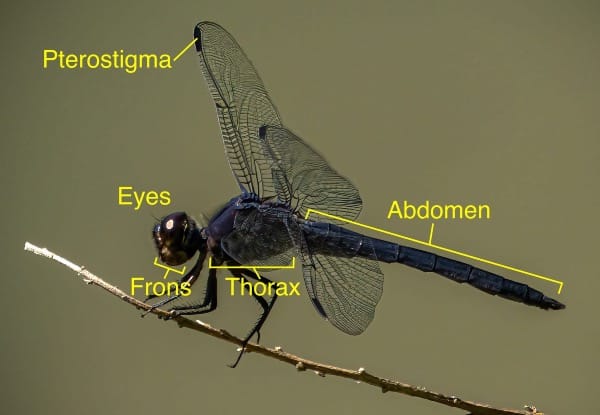
Emerald Family
The park is home to two species of the Emerald family of dragonflies, both are called baskettails because the female carries her fertilized eggs s at the tip of her abdomen held in a structure resembling a basket. Males are commonly seen continuously patrolling near the edge of the ponds, I have yet to spot a female see any of them perched anywhere. These can be difficult to identify because they are continuously moving. Males and females of the two baskettails I've seen at the park are nearly identical, especially in flight.
Common Baskettail: Mid-May to early August.
Males and females are colored the same: the orange side marks on the abdomen are the clearest identifying marks. Eyes are red above and gray below, and have an orange frons (the structure forward of the eyes.)
Prince Baskettail: May to early July.
Females and males colored alike. Three markings on all wings and the longer, thinner abdomen differentiate between the common and prince baskettails.
Skimmer Family
Skimmers are the the largest family of dragonflies (29 groups with 114 different species in North America). Males and females often look different, wings held out flat when they're resting. Named for skimming low over the water. Frequently perch on plants, often returning to a favorite spot. Active daytime hunters, feeding on small flying insects. Females lay their eggs by tapping the water with the tip of their abdomen (ovipositing).
Whitetail Group
Common Whitetail: Late April to early November. Most commonly seen May to September.
Often perches on pathways, and low vegetation. Aggressive, territorial males defend about 500 square feet of pond area, elevating their white abdomen when approaching intruders. They hunt from perches, darting out to catch prey.
Males have a white abdomen and broad brown bands on the outer portion of their wings, and a smaller mark on each wing where it joins their body.
Females have a brown abdomen with white marks down the sides and three marks on their wings.
Meadowhawk Group
Autumn Meadowhawk: August to October, potentially into November.
May be seen in the woods as well as the water's edge. Frequently perch on the tips of low vegetation, and on cooler days, on the ground. Males are not territorial. They hunt small flying insects from a perch.
Males are bright red, with a red face and slender red abdomen.
Females are tan as shown in this mating pair.
Pondhawk Group
Eastern Pondhawk: Late May to mid-September.
Found around water's edge, often perching on the ground, flat rocks, or logs. Males are highly territorial, defending about five square yards. They hunt from low perches.
Adult males are pale to powdery blue on the abdomen and thorax, with a pale-tipped abdomen. Their eyes and face are green.
Females are bright green with black markings or spots on the abdomen.
Saddlebag Group
Black Saddlebags: Late May to late October, peaking July to early September.
Tends to stay in flight patrolling shoreline, territorial, rarely perching for extended periods. When they do perch, it may be low in grasses or high in trees.
Male two distinct dark blotches on each hindwing, near the body, resembling saddlebags.
Female also has wing markings and yellow marks along abdomen.
Blue Dasher Group
Blue Dasher: Mid-May to late October.
Common sight at the park Blue dashers are the single species of the Blue Dasher group. Adults are voracious predators of small flying insects, including mosquitoes.
Male is blue with yellow-striped thorax and metallic green eyes. Wings have dark streaks.
Females have yellow stripes on the upper side of their abdomen.
Amberwing Group
Eastern Amberwing: Mid-summer.
Most common and smallest dragonfly species at the park often seen buzzing around pond edges, hovering low over the water surface. They perch frequently on low vegetation near the shore. Females are often found away from water in meadows.
Males have distinct amber-colored wings with bright orange pterostigma towards the wing tip
Females have clearer wings with brown patches and no orange pterostigma.
King Skimmer Group
Slaty Skimmer: June to August.
Seen often perching on top of vegetation in the sun. Males are territorial and aggressive, defending stretches of shoreline. They hunt from their perch, often preying on smaller dragonflies. Females are rarely seen at the water's edge unless ready to lay eggs. I've never spotted a female slaty skimmer at the park.
Males blue-black with a very long abdomen. This blue color is a waxy substance that develops with age.
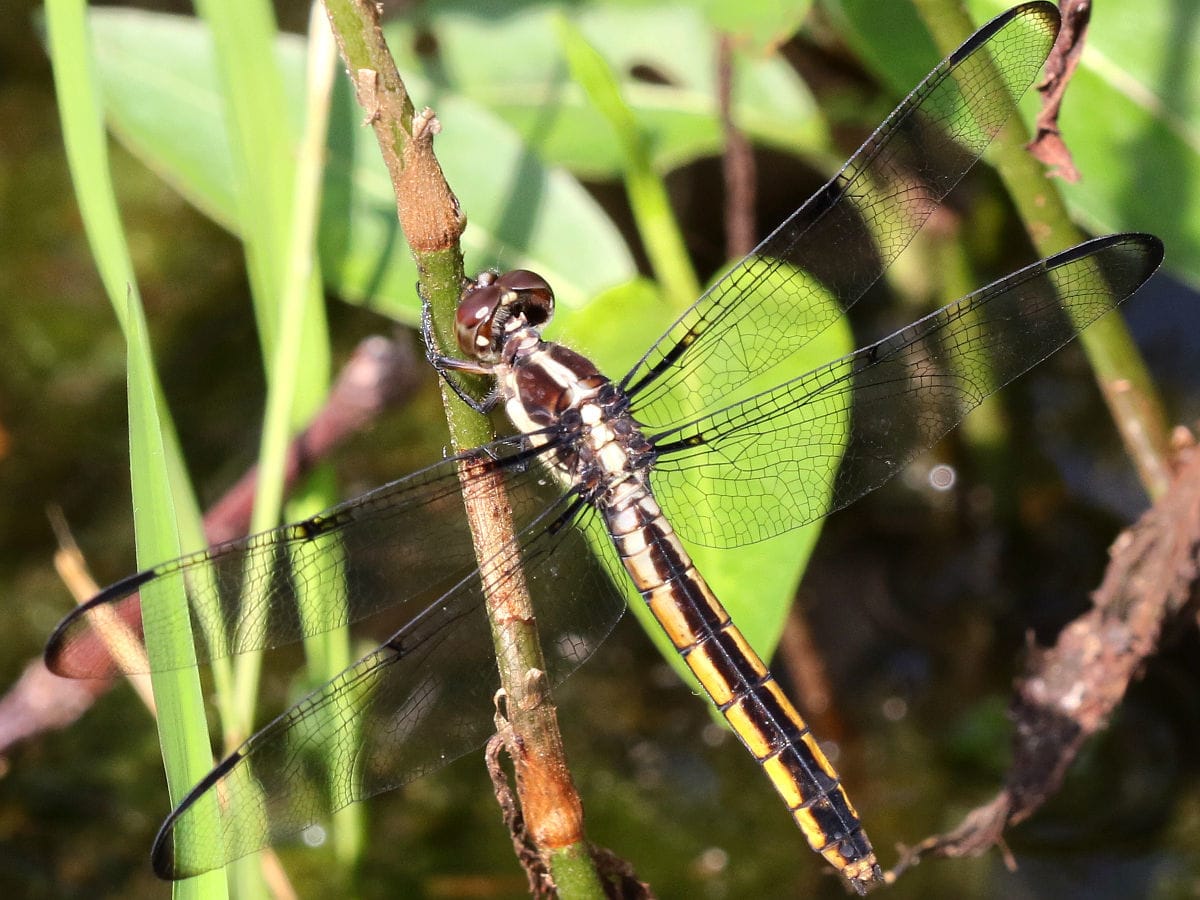
Females have lighter markings, though mature females can also become dark blue.
Widow Skimmer: April to October
Big showy dragonfly that immediately catches the eye. Territorial and aggressive males patrol shoreline territory. Sometimes seen perching away from water.
Males blue-grey with black and white patches on the wings.
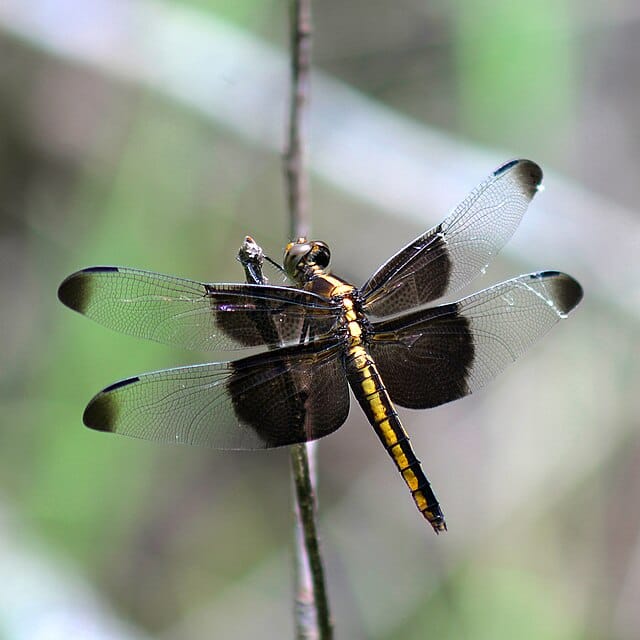
Females are yellow and black with black wing patches and black wing tips.
Small Pennant Group
Halloween Pennant: Late June to early September.
Known for a distinctive hovering flight pattern or slow, deliberate flight. Males are not territorial towards each other, so groups may be seen perched on twigs and grasses at pond margins. Also found hunting in open areas like fields.
Both male and female have distinct black bands on wings.
Male has orange wings, red wing veins and red pterostigma.
Females yellowish wings with yellow pterostigma.
Clubtail Family
This largest family of North American dragonflies is not often spotted at the park, I have seen two species a very few times.
Pond Clubtail Group
Unicorn Clubtail: May-August
Gray-green thorax with black shoulder stripes. Abdomen is mostly black with pale stripes, and the end of the club-shaped tail is yellow with rusty-brown fringes. Legs are mostly black with pale streaks. Eyes vary from gray-green to bright green.
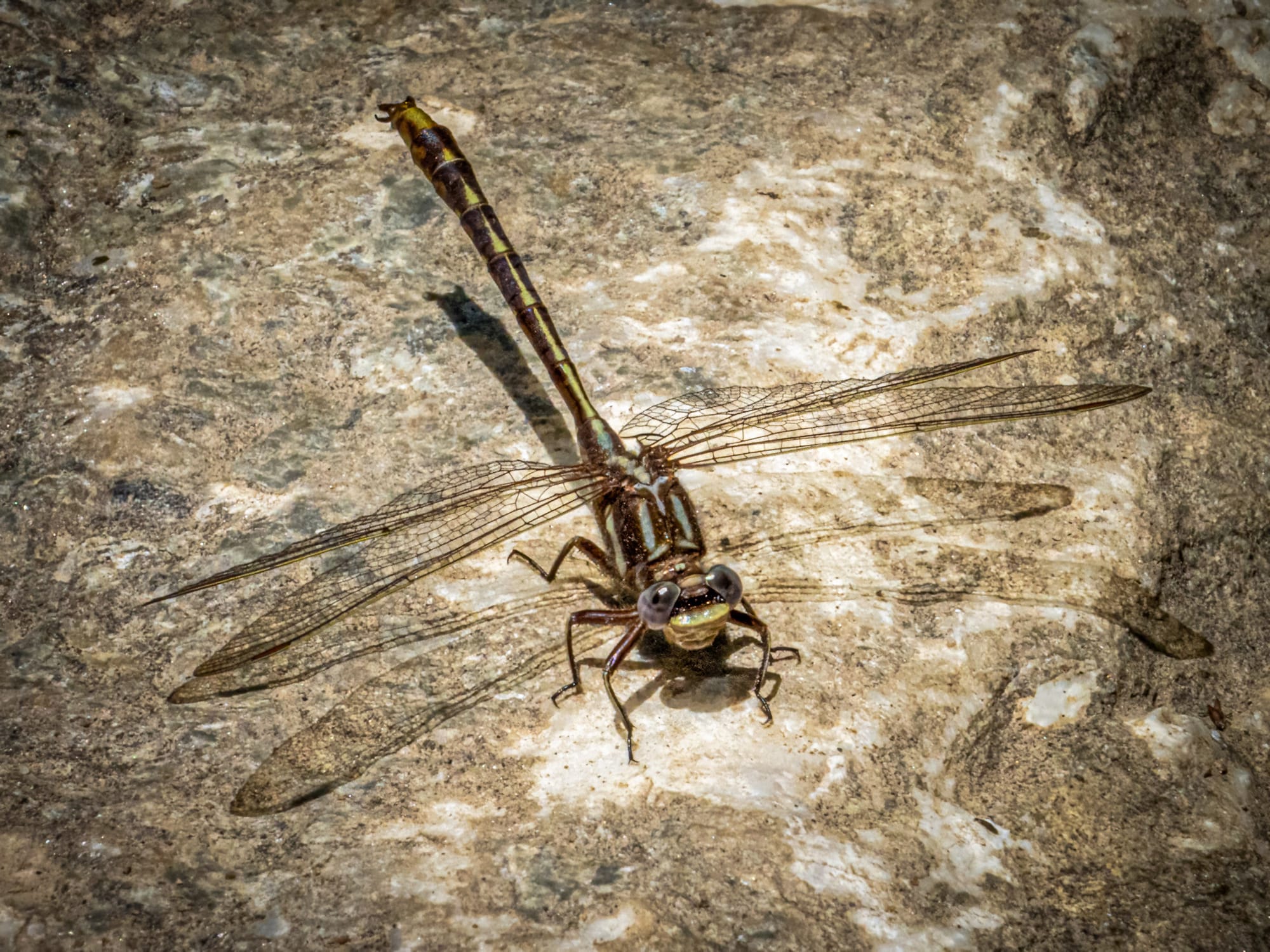
Prefers ponds, lakes, and slow streams with muddy bottoms and little submerged vegetation. Flies low, just above the water's surface, on short patrols along the shoreline. Often perches flat on stream and pond banks free of vegetation. Males and females have very similar coloring.
Dragonhunter Group
Dragonhunter - June-September
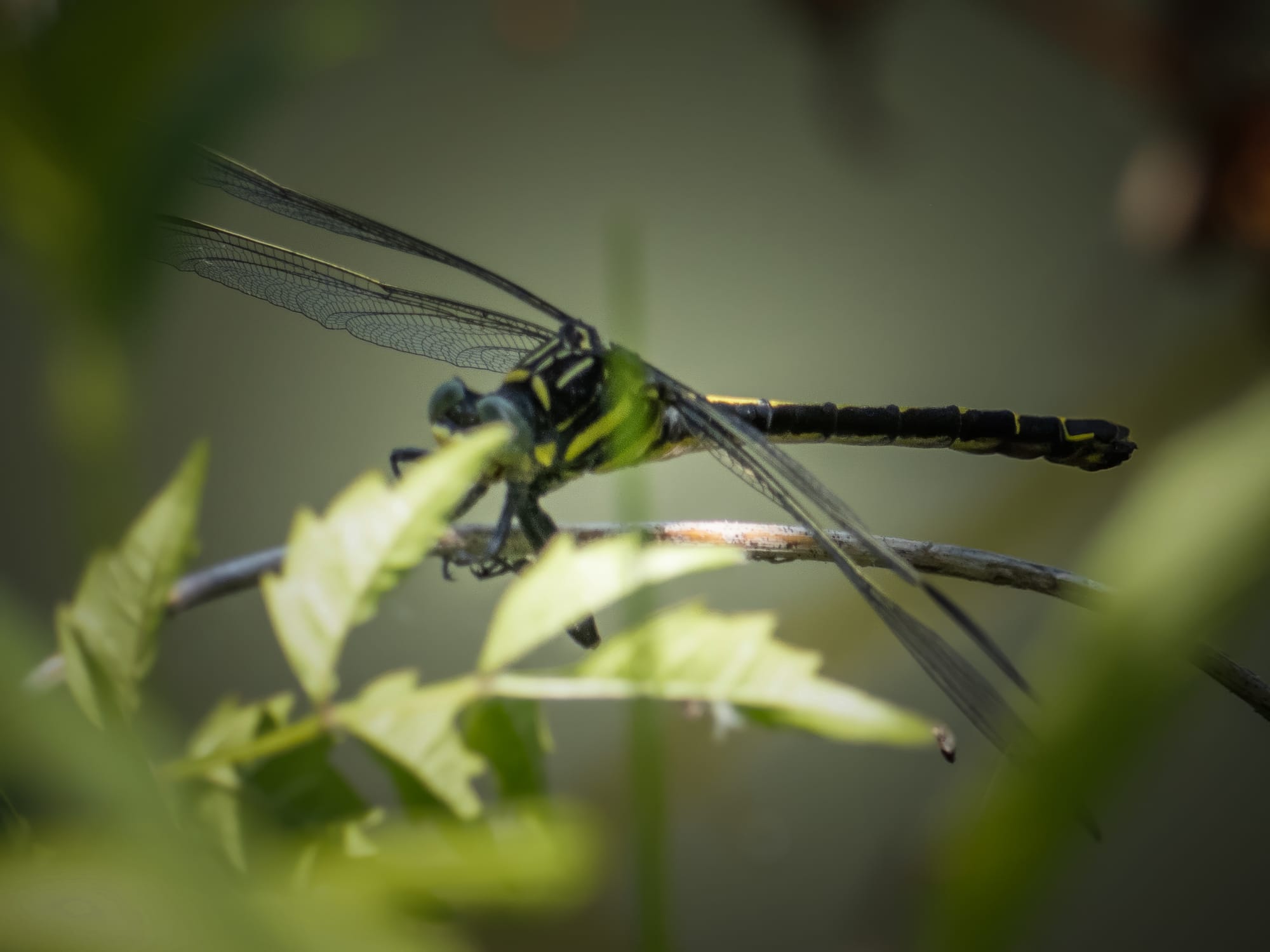
If you are fortunate enough to spot the Dragonhunter at the park (I've seen it only once). Dragonhunters are yellow and green and the largest species you're likely to see at the park - between 3-4 inches in length. Keep you eyes open around the creek for this impressive predator.

